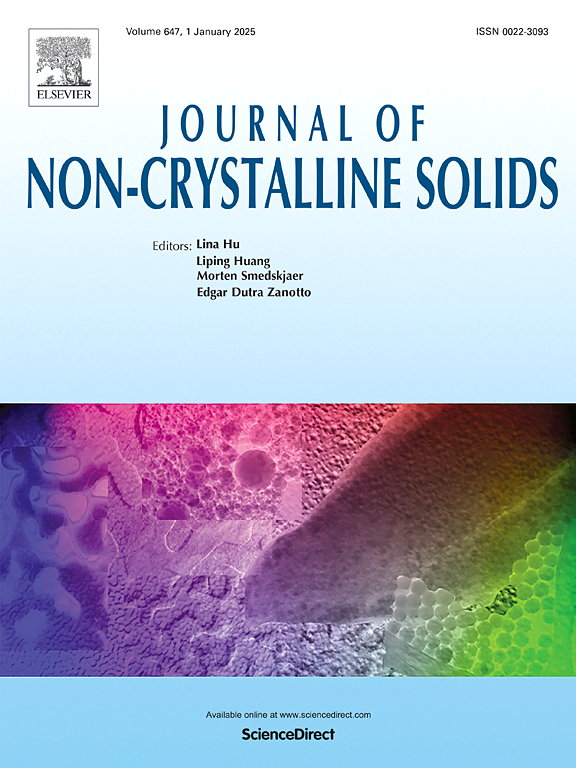金属玻璃的硅微合金化调谐机制
IF 3.5
3区 材料科学
Q1 MATERIALS SCIENCE, CERAMICS
引用次数: 0
摘要
由于塑性载体不明确,在不牺牲强度的情况下对非晶金属进行延展性处理具有挑战性。本研究试图在计算机模拟中模拟物理冶金的微合金化策略,通过选择性地将一小部分典型原子钉在金属玻璃上,以有效地优化金属玻璃的力学性能。我们发现,高参与低频振动模式的钉住原子在强化中更有效,这归因于一种尺度依赖的钉住效应机制。通过在不稳定的玻璃样中只固定2%的原子,可以获得与冷却速度慢8个数量级制备的样品相当的剪切模量,突出了微合金化比热处理的有效性。此外,这种微合金化方法不仅控制了金属玻璃的弹性性能,而且减轻了金属玻璃的破坏模式。结果表明,限制剪切带外区域原子的运动对抑制剪切带的传播起着至关重要的作用。本文章由计算机程序翻译,如有差异,请以英文原文为准。
Tuning mechanics of metallic glasses via in silico microalloying
Ductilizing amorphous metals without sacrificing strength is challenging due to unclear plasticity carriers. This study attempts to mimic the microalloying strategy of physical metallurgy in computer simulations by selectively pinning a small fraction of typical atoms in metallic glass, which is targeted to efficiently optimize the mechanical properties. We found that pinning atoms with high participation in the low-frequency vibrational modes are more effective in strengthening, attributing to a mechanism of scale-dependent pinning effect. By pinning only 2 % atoms in the unstable glassy samples, one can achieve shear modulus comparable to samples prepared with cooling rates that are eight orders of magnitude slower, highlighting the validity of microalloying over thermal treatment. Moreover, this microalloying approach not only control elastic properties, but also mitigates the failure mode of metallic glass. It demonstrates that restricting the motion of atoms in regions external to the shear band plays a critical role in inhibiting the propagation of the shear band.
求助全文
通过发布文献求助,成功后即可免费获取论文全文。
去求助
来源期刊

Journal of Non-crystalline Solids
工程技术-材料科学:硅酸盐
CiteScore
6.50
自引率
11.40%
发文量
576
审稿时长
35 days
期刊介绍:
The Journal of Non-Crystalline Solids publishes review articles, research papers, and Letters to the Editor on amorphous and glassy materials, including inorganic, organic, polymeric, hybrid and metallic systems. Papers on partially glassy materials, such as glass-ceramics and glass-matrix composites, and papers involving the liquid state are also included in so far as the properties of the liquid are relevant for the formation of the solid.
In all cases the papers must demonstrate both novelty and importance to the field, by way of significant advances in understanding or application of non-crystalline solids; in the case of Letters, a compelling case must also be made for expedited handling.
 求助内容:
求助内容: 应助结果提醒方式:
应助结果提醒方式:


